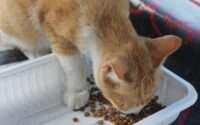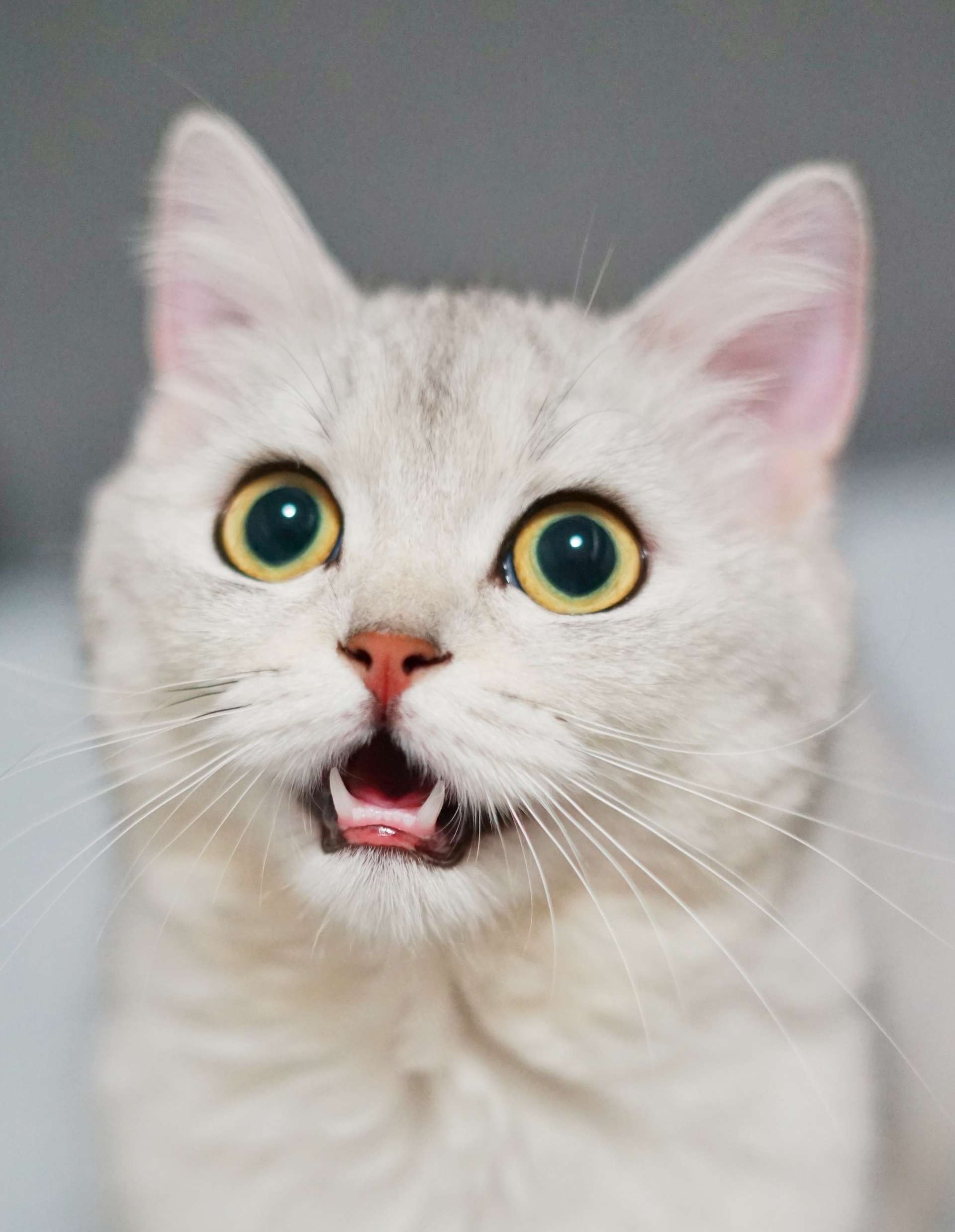Do Ragdoll Cats Shed? Your Complete Shedding Survival Guide!
Welcome to our in-depth guide on Ragdoll cat shedding! If you’re a proud Ragdoll cat parent or considering bringing one of these enchanting felines into your home, you’re in the right place. Ragdoll cats are renowned for their striking blue eyes, gentle disposition, and luscious fur. But, as with any cat breed, shedding is a natural part of their lives, and understanding how it works can help you ensure a comfortable and clean living environment for both you and your furry friend.
In this comprehensive guide, we’ll explore the ins and outs of Ragdoll cat shedding. From understanding the breed’s history and characteristics to demystifying the shedding cycle, we’ll leave no stone unturned. We’ll also delve into effective strategies to manage shedding, including grooming techniques, nutrition, and tips for dealing with seasonal variations.
So, without further ado, let’s embark on this fascinating journey to discover everything you need to know about Ragdoll cat shedding.
Understanding Ragdoll Cats
Ragdoll cats have a captivating origin story that dates back to the 1960s. They were created by Ann Baker, a Persian cat breeder in Riverside, California. Ann’s journey into breeding began with a striking white Persian cat named Josephine, who became the matriarch of the Ragdoll breed. Josephine had unique genetics that contributed to the breed’s signature traits.
The breed’s name, “Ragdoll,” was inspired by their tendency to go limp and relaxed when picked up, much like a child’s ragdoll toy. This characteristic reflects their gentle and placid nature. Ragdolls were officially recognized as a breed in the 1960s and quickly gained popularity for their striking appearance and amiable personalities.
Today, Ragdoll cats have become beloved pets around the world. Their history is a testament to the passion and dedication of cat breeders and enthusiasts who saw the potential for a truly remarkable feline companion.
Shedding in Ragdoll Cats
The Shedding Cycle
Understanding the shedding cycle of Ragdoll cats is key to managing their fur effectively. While shedding is a natural process for all cats, the frequency and intensity can vary. Ragdolls typically follow a similar pattern:
- Year-Round Shedding: Ragdoll cats shed year-round, but the amount of fur shed is usually moderate. You’ll notice a few loose hairs, especially during petting and cuddling sessions.
- Seasonal Variations: Just like many other cat breeds, Ragdolls tend to shed more during seasonal changes, particularly in the spring and fall. This shedding is part of their adaptation to temperature variations.
- Indoor vs. Outdoor Influence: Indoor Ragdoll cats may shed more evenly throughout the year, while outdoor cats often shed more in response to the changing seasons and temperature fluctuations.
Understanding the shedding cycle allows you to adapt your grooming routine and keep your home fur-free.
Ragdoll Cat Coat Types
Ragdoll cats are known for their beautiful and luxurious coats, which come in various patterns and colors. Understanding their coat types can provide insights into their shedding tendencies:
- Colorpoint: Colorpoint Ragdolls have a color contrast between their body and their “points” – the ears, face, paws, and tail. These cats tend to have less undercoat and might shed less compared to other patterns.
- Mitted: Mitted Ragdolls have white “mittens” on their paws, a white chin, and a white stripe down their belly. Their undercoat can be denser, leading to more shedding.
- Bicolor: Bicolor Ragdolls have white markings on their legs, belly, and face, creating a distinctive look. Their undercoat can also be dense, resulting in moderate shedding.
Managing Ragdoll Cat Shedding
Proper grooming is a crucial aspect of managing Ragdoll cat shedding. Regular brushing not only keeps their coat in top condition but also helps control shedding by removing loose fur. Here are some grooming tips:
- Use the Right Tools: Invest in a high-quality cat brush or comb suitable for your cat’s coat type. Brush your Ragdoll at least 2-3 times a week to prevent matting and reduce shedding.
- Gentle Approach: Ragdoll cats are known for their docile nature, but still, approach grooming with care and patience. Make it a positive bonding experience by rewarding them with treats and affection.
- Bathing: While not necessary often, occasional baths can help reduce shedding and keep their coat pristine. Make sure to use a cat-specific shampoo and introduce your Ragdoll to water gradually.
By incorporating regular grooming into your cat’s routine, you can significantly minimize shedding and enjoy a clean, fur-free home.
Coping with Seasonal Changes
Shedding in Different Seasons
Ragdoll cats are not immune to the influence of the seasons when it comes to shedding. As the weather changes, you may notice variations in their shedding patterns. Here’s what you need to know:
- Spring Shedding: When the weather warms up in spring, Ragdoll cats often experience an increase in shedding. This is their way of shedding their thick winter coat to prepare for the warmer months.
- Fall Shedding: In the fall, as temperatures drop, your Ragdoll might shed again. They grow a thicker coat to stay warm during the colder months.
Indoor vs. Outdoor Cats
The environment in which your Ragdoll cat lives can also impact their shedding. Here’s how:
- Indoor Cats: Indoor Ragdoll cats tend to experience more consistent shedding year-round, as their environment remains stable. Regular grooming and a controlled climate can help manage this shedding.
- Outdoor Cats: Outdoor Ragdolls might shed more during seasonal changes due to the temperature fluctuations and exposure to different environmental factors. Be prepared for increased shedding during transitions between indoor and outdoor life.
Understanding and adapting to these seasonal and environmental influences will help you better manage your Ragdoll cat’s shedding.
Dealing with Excessive Shedding
When to Be Concerned
While shedding is a natural part of a cat’s life, it’s essential to recognize when excessive shedding may indicate an underlying issue. If you notice any of the following signs, consult with your veterinarian:
- Bald Spots: If your Ragdoll develops bald spots or areas with no fur, this is cause for concern and requires a vet’s attention.
- Irritated Skin: Redness, itching, or irritation on your cat’s skin could be a sign of skin problems or allergies. This may contribute to excessive shedding.
- Sudden Increase in Shedding: If your Ragdoll experiences an abrupt and severe increase in shedding, it could be due to an underlying health problem. It’s crucial to get a professional evaluation.
Shedding and Allergies
Excessive shedding can be particularly challenging for cat owners who have allergies. Here are some tips to minimize allergens:
- Regular Cleaning: Frequent cleaning of your home, including vacuuming and dusting, can help reduce allergens and keep your living space allergy-friendly.
- Air Purifiers: Consider using air purifiers designed to capture pet allergens. These devices can improve indoor air quality.
- Allergen-Reducing Products: Explore allergen-reducing products, such as special bedding covers and high-efficiency particulate air (HEPA) filters for your HVAC system.
In conclusion, keeping a close eye on your Ragdoll cat’s shedding patterns and seeking professional advice when necessary will ensure a happy and healthy life for both you and your beloved feline friend.
Conclusion
In this comprehensive guide, we’ve unraveled the mysteries of Ragdoll cat shedding, from understanding their history and unique characteristics to managing shedding effectively. Ragdoll cats, with their gentle temperament and captivating appearance, have captured the hearts of cat enthusiasts worldwide. Shedding is a natural part of their lives, but with the right knowledge and care, you can keep your home fur-free and your Ragdoll content.
Here are the key takeaways:
- Regular grooming is your best friend when it comes to managing shedding. Invest in the right grooming tools and establish a consistent routine.
- Seasonal changes and indoor vs. outdoor living can influence shedding patterns, so adapt your care accordingly.
- If you notice excessive shedding, bald spots, or signs of skin irritation, consult your veterinarian. They can diagnose and address any underlying health issues.
- For cat owners with allergies, maintaining a clean home, using air purifiers, and allergen-reducing products can help minimize discomfort.
Ragdoll cats are truly a delight to have as companions, and a bit of shedding is a small trade-off for the joy they bring to our lives. By adapting to seasonal changes, and addressing any health concerns with your veterinarian, you can enjoy a harmonious life with your Ragdoll cat while keeping your living space clean and comfortable.
Frequently Asked Questions
Are Ragdoll cats hypoallergenic?
Ragdoll cats are not typically considered hypoallergenic. While they may produce fewer allergens compared to some other breeds, they still shed and can trigger allergies in sensitive individuals. If you have allergies and are considering a Ragdoll cat, spend time with one first to assess your reaction before bringing one into your home.
Do Ragdoll cats shed?
Yes, all cats, including Ragdolls, shed to some extent. However, Ragdoll cats are known for having moderate shedding, especially when compared to other breeds. Their shedding can vary based on factors like the season and their living environment.
How often should I groom my Ragdoll cat to manage shedding?
Regular grooming is essential for managing shedding in Ragdoll cats. Aim to brush your Ragdoll at least 2-3 times a week to remove loose fur and prevent matting. Adjust the frequency based on your cat’s shedding patterns.
What type of brush or grooming tool is best for a Ragdoll cat?
The type of brush or grooming tool you need depends on your Ragdoll’s specific coat type. Generally, a slicker brush or a soft bristle brush works well. For Ragdolls with denser coats, a wide-toothed comb can help detangle and remove loose fur effectively.
How can I minimize allergies caused by my Ragdoll cat’s shedding?
Allergies can be challenging for cat owners. To reduce allergens, maintain a clean home by frequent vacuuming and dusting. Use high-efficiency particulate air (HEPA) filters in your HVAC system and consider allergen-reducing products like special bedding covers.
What should I do if I notice bald spots or excessive shedding in my Ragdoll cat?
If you observe bald spots, severe or sudden increases in shedding, or signs of skin irritation in your Ragdoll cat, consult your veterinarian. These could be indicators of underlying health issues that require professional evaluation.
Can I give my Ragdoll cat a bath to reduce shedding?
Yes, occasional baths can help reduce shedding in Ragdoll cats. Use cat-specific shampoo and introduce your cat to water gradually to ensure a positive bathing experience. Baths are not required frequently but can be beneficial.
Should I change my Ragdoll cat’s diet to control shedding?
Diet can play a role in managing shedding. Ensure your Ragdoll cat is receiving a balanced and high-quality cat food. You can also discuss with your veterinarian the possibility of adding supplements like Omega-3 fatty acids, which can promote a healthy coat.
Are there any specific allergen-reducing products designed for Ragdoll cat owners?
While there are no allergen-reducing products specifically designed for Ragdoll cat owners, you can find general products like HEPA filters, allergen-proof bedding covers, and air purifiers that can help minimize allergens in your home.
Are there any hypoallergenic grooming techniques or products that can help with Ragdoll cat shedding?
There are no grooming techniques or products that can make a Ragdoll cat completely hypoallergenic. However, regular grooming and the use of allergen-reducing products can help minimize allergens in your home. Additionally, consider using specialized cat wipes or grooming sprays to reduce loose fur and dander on your cat’s coat.





